La Libertad
Trujillo
La Libertad
La Libertad is the city where one of the most elegant couple's dances in South America was founded: the graceful Marinera Norteña. Meanwhile, the exquisite colonial architecture of its capital city, Trujillo, makes every corner a scene worthy of a postcard. This sunny region is also known for its time-honored traditions, like fishing on Caballitos de Totora, watercraft built from reeds on which the Chimús of old defied the unruly seas of northern Peru.
In the City of Eternal Spring, as Trujillo is known because of its sunny climate, you can also visit a place like nowhere else on earth: Chan Chan, the world’s largest clay city and an invaluable relic of this region’s ancient inhabitants. Trujillo's archaeological riches are an important part of the Moche Route, with monumental ruins like Huaca de La Luna – capital of the Moche civilization for more than six centuries– and the El Brujo Archaeological Complex, where the Lady of Cao tells part of the millenary history of Peru.
The Trujillo experience is made complete by beautiful beach resorts like the quaint Huanchaco– claimed by many to be the birthplace of Peruvian ceviche– and local fare bursting with the flavors of the sea.
Location
Northern coast of Peru
Capital
Trujillo (34 meters)
Elevation
min.: 3 meters (Salaverry)
max.: 4008 meters (Quiruvilca)
Climate
Temperature
Max.: 28 °C Min.: 19 °C
Arriving
By land
Lima - Trujillo: 560 km / 9 hr
Chiclayo - Trujillo: 209 km / 3 hr 30 min
Piura - Trujillo: 420 km / 6 hr
Tumbes - Trujillo: 698 km / 11 hr
By air
Lima - Trujillo: 1 hr
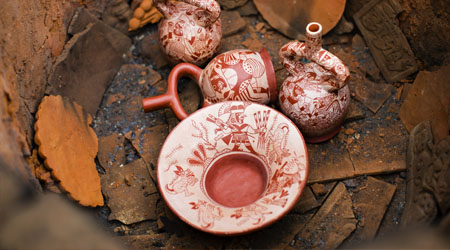
What to buy?
Handicrafts such as wood carvings and modeled ceramics are very popular here. Trujillo is a major exporter of footwear and leather accessories.
What to eat?
La Libertad’s gastronomy is infused with marine and mountain ingredients that deliver dishes rich in flavor. Cebiche, shámbar (a soup prepared only on Mondays), patita fiambre (pig’s tro¬er), sopa teóloga (theologian soup), pato guisado (stewed duck) and pavo (turkey) pepián are just some of the typical plates.
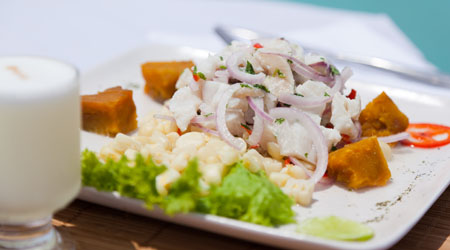
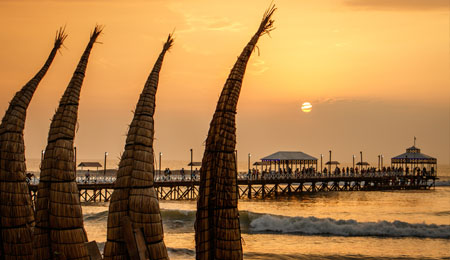
Tours (3 days the mínimum recommended stay)
Moche District: Archeological tour of the Huaca del Sol and the Huaca de la Luna
Trujillo city tour: The Main Square, the Cathedral, important mansions, churches and museums
Archeological tour and Huanchaco seaside resort: The mud-brick city and museum at Chan Chan and the Huanchaco seaside resort
Ascope Province: El Brujo archeological complex, Puerto Chicama (Malabrigo)
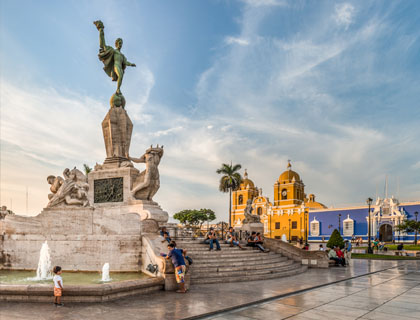
Trujillo Main Square
Martín de Estete laid out this plaza as the heart of the city. The La Libertad Monument, a baroque-style marble sculpture by the German, Edmund Müller, is located in the center.
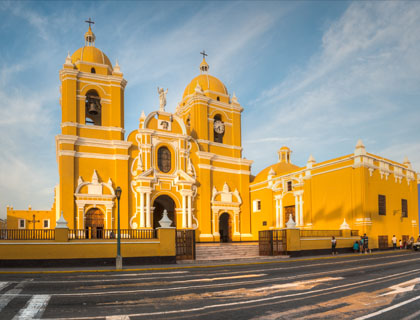
The Cathedral
Location: Main Square.
Visiting Hours: Mon-Sun: 07:00 - 13:00 hrs. / 17:00 - 21:00 hrs.
Dating back to the 17th century, the Cathedral houses important works of vice-royal art, such as the painting "The Ecstasy of Saint Teresa", and the city’s only free-standing altarpiece, in its main altar. Projecting from one of the towers, is a clock brought from Spain during the first half of the 19th century.
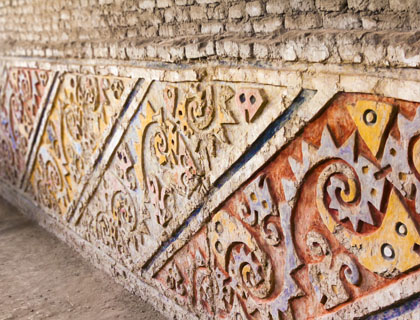
The Huaca del Sol and the Huaca de la Luna
Location: 7.5 km to the south of Trujillo (15 min. by car).
Visiting Hours: Mon-Sun: 09:00 - 16:00 hrs
These dazzling Moche structures face each other. The Huaca del Sol (Temple of the Sun) served as an administrative center. The Huaca de la Luna (Temple of the Moon) was a ceremonial center. Only the la¬er is open to the public at present. Colorful murals and depictions of the god Ai-apaec are visible on its walls.
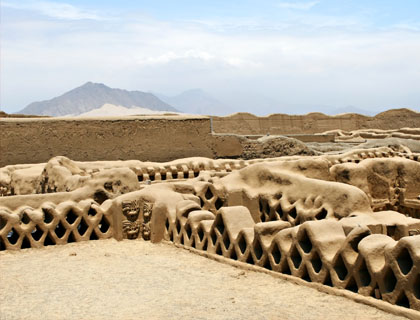
The Chan Chan Citadel
Location: 6.5 km to the northwest of Trujillo (16 min. by car).
Citadel opening hours: Mon-Sun: 09:00 - 16:00 hrs.
Site Museum: Tues-Sun: 09:00 - 16:00 hrs.
This was the main center of the Chimú kingdom and is the largest Pre-Hispanic mud city in the Americas. It consists of streets, walls and pyramidic temples. Its majestic walls decorated with reliefs displaying geometric and zoomorphic beings can still be admired. It has a museum and was declared a World Heritage Site.
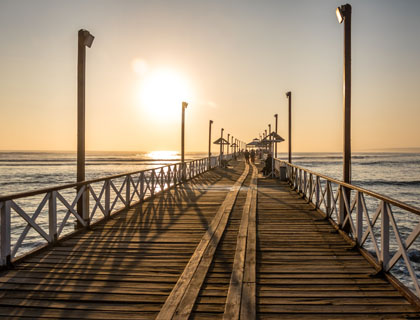
Huanchaco Seaside Resort
Location: 13.5 km to the northwest of Trujillo (22 min. by car).
Huanchaco was an important port for the Moche and the Chimú. It is still popular because of its caballitos de totora, small boats which fishermen the area have used for centuries. The Longboard Pro Perú world championship takes place in this traditional seaside resort.
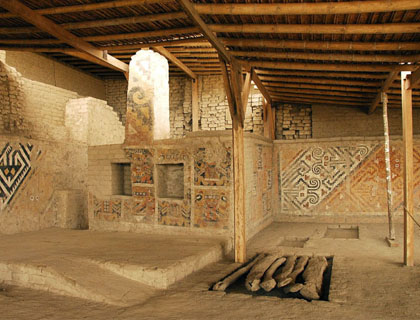
The El Brujo Archeological Complex
Location: 60 km to the northwest of Trujillo in the Chicama valley, in the village of Magdalena de Cao (1 hr. 20 min. by car).
Visiting Hours: Mon-Sun: 09:00 - 16:30 hrs.
This complex was built in the Pre-Ceramic period and consists of three buildings: the Huaca Prieta, the Huaca Cao and the Huaca Cortada. The Moche painted their world view on its high adobe walls. The Degollador de Cabezas (the Head Cutter) is a feature. The Dama de Cao (the Lady of Cao), the mummified body of a Moche dignitary, is on display.
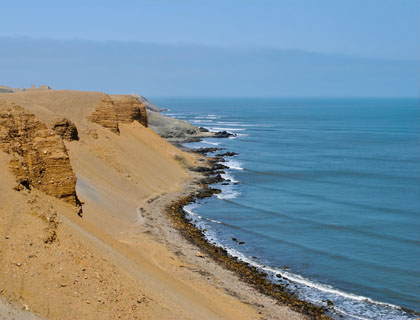
Puerto Chicama
Location: Leaving the Panamericana Norte Highway, 614 km from Lima, and 70 km north of Trujillo (1 hr. 30 min. by car).
Historically known as Malabrigo, this was the port of the Casa Grande sugar plantation. It is a compulsory stop for surf lovers. Its wide beach has the longest left-hand wave in the world and is the stage for longboard surf championships.



